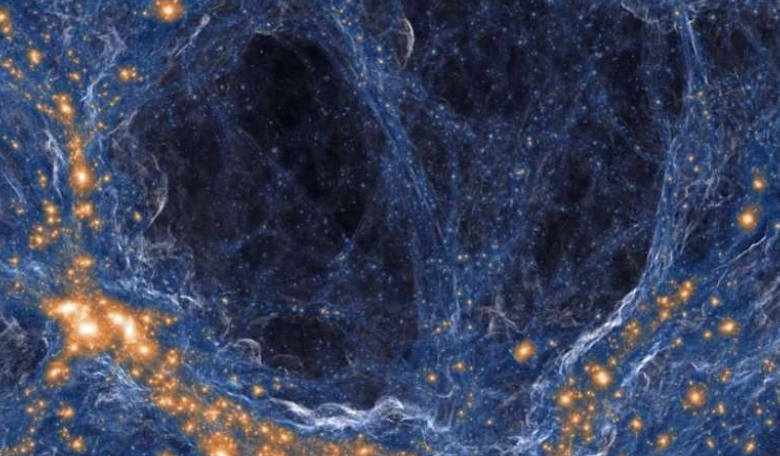It's been a long-established astronomical fact that over 12 billion years ago, gas in deep space appeared to be more opaque than it is now, though this opacity was not uniform throughout the universe. Yet astronomers were unsure as to the cause of these opacity variations. Now, a group of University of California astronomers have finally moved one step closer to solving the mystery of the first galaxies.
In the first billion years after the Big Bang, ultraviolet light from the first galaxies filled the universe with gas. The more galaxies were present in a region, the earlier this would have occurred. The team, using the Subaru telescope in Hawaii, searched a region of space about 500 million light-years across, specifically looking at areas with opaque gas. Regions where starlight could not get through intergalactic gas had fewer galaxies, whereas those parts of space where the number of galaxies was quite large indicated that the gas in that region had significantly cooled over hundreds of millions of years. Ultimately, researchers discovered that the region in question had far fewer galaxies than they expected – proving that starlight was unable to penetrate interstellar gas.
"It is not that the
opacity is a cause of the lack of galaxies," said Steven
Furlanetto, a UCLA professor of astronomy and a co-author of the
research. "Instead, it's the other way around."
The scarcity of galaxies in this region could be why it appears so opaque. The team concluded that since the gas in deep space is made more transparent by ultraviolet light from nearby galaxies, fewer galaxies would make a specific area darker.
The researchers plan to
conduct further studies of this and other similar voids, to search
for clues about the first generations of galaxies and how they
illuminated the universe in the billion years after the Big Bang.
According to Furlanetto, the astronomers hope that studying the
interplay of galaxies and gas in deep space will reveal more about
how the intergalactic ecosystem took shape during that period of the
early universe.











